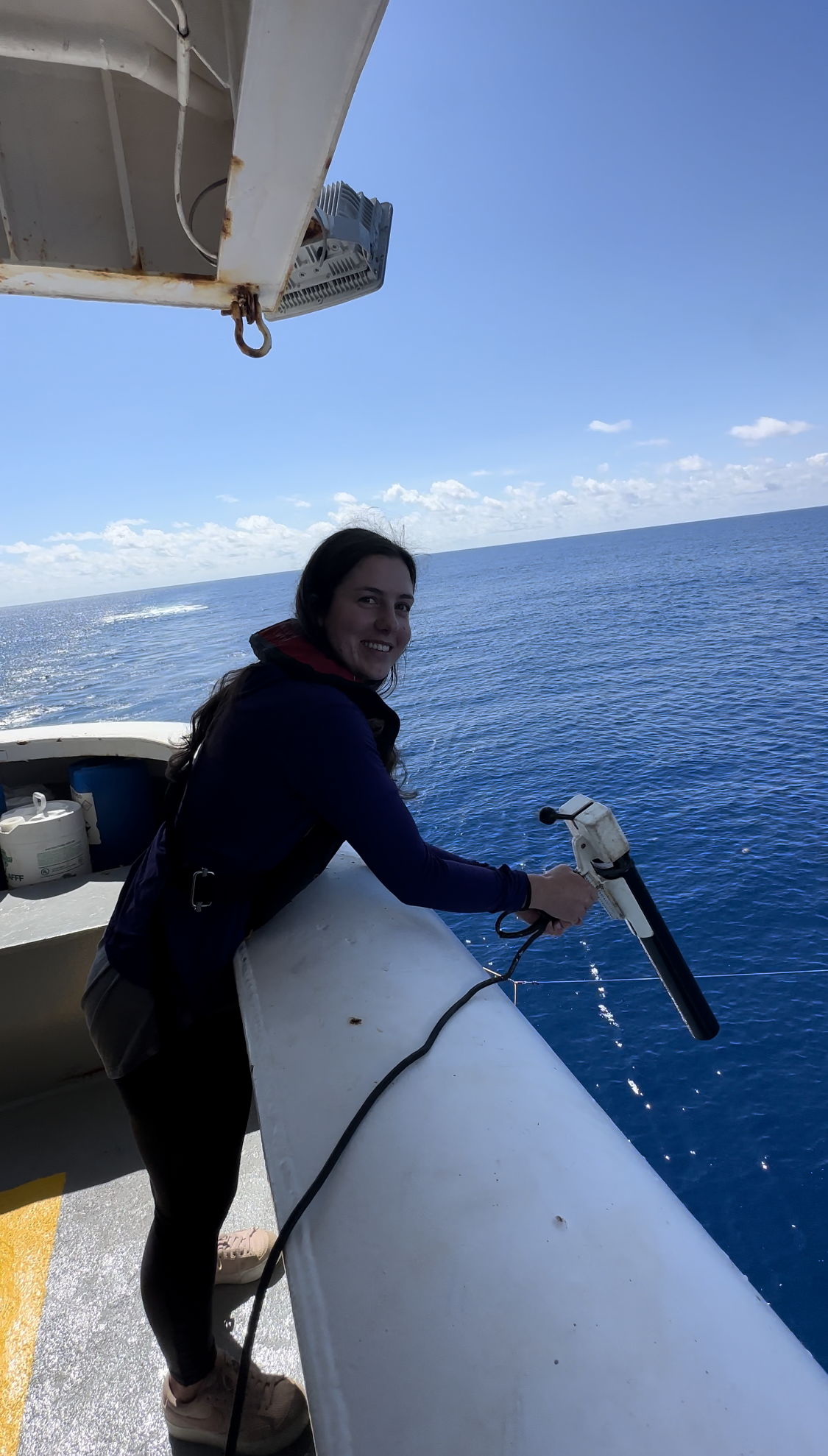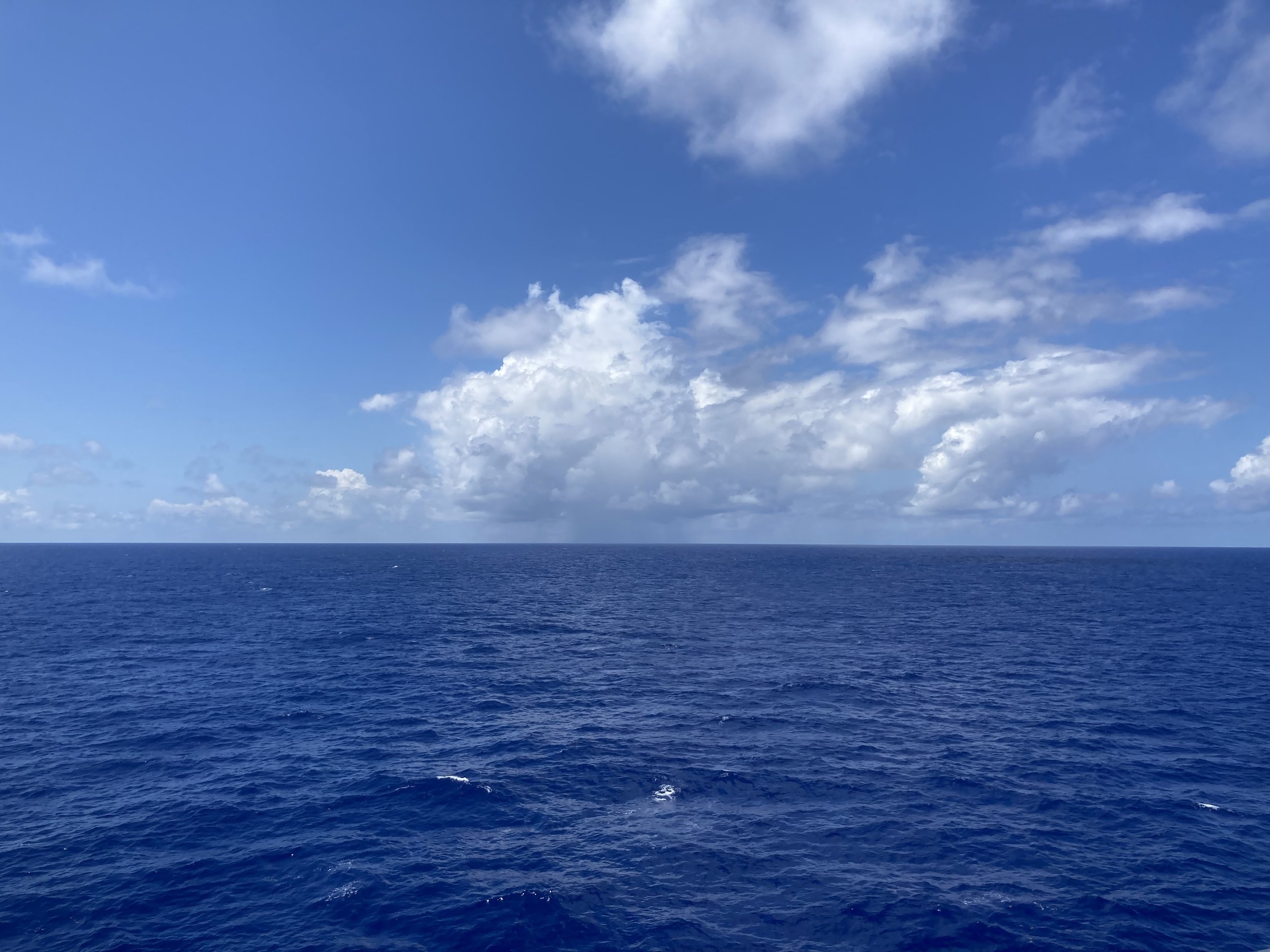Daily Life on board
After deploying 32 OBS along the first line, we turned back and started shooting air guns along the line. The air gun shots create seismic signal that can be captured by the OBS. These seismic data will be used to analyze the deep structure of this region.
Read below for a blog post written by Elika Zilis about her daily life on the cruise!
Due to the ship’s 24 hour schedule, everyone has a different “day” in which they work, sleep, and relax. My working shift is 6am-2pm everyday; during which I monitor and take notes of the experiment in real time in the science lab at the bottom of the ship. This way, we can see that everything is working as it is supposed to and if it is not, we can make adjustments and contact the respective people for the job. I also read research papers and take notes that the science team discusses every few days having to do with our study area and the rifting processes that are present here. During the deployment of the ocean-bottom seismometers (OBS), we enter the latitude/longitude coordinates, time, current speed & direction, instrument number, depth, and the OBS logger number in the elog that we use universally across the ship to record events within the experiment. Recording these parameters helps us to identify where the OBS’ will surface once we recover the OBS after the data of the air “shots” has been recorded on the instrument. It is also important to keep a map of where and what you have been doing in a science experiment to aid in an explanation of methods as well as for future use & reference.
Elika is taking Elog for the OBS deployment.
At this point in the cruise, the air guns are shooting so we would like to know how they are working. One of the ways we can check on them is by measuring the speed of sound that they are generating through the water. This morning I deployed an XBT or a speed of sound profiler which measures the temperature and salinity as it falls to greater depths so that we can calculate the speed of sound using those parameters.
Elika is deploying an XBT which measures the temperature and salinity of water
Later on during the cruise, the science team will process the magnetic and gravity data that we are acquiring throughout. Both of these properties have available global reference data that we can compare to our data and subtract out corrections as well as filter the data for high frequency noise that we see. Once we have the anomalies calculated, we will map this data using software so that we are able to visually see them and compare them to our data in order to make assumptions about the presence of possible volcanics etc,.
Todd is giving a safety orientation to the teams. Photo by Ranpeng.
After my shift, I often sit outside on the deck and watch the water while reading or writing for hours at a time. Many others in the science group have other projects to work on like their Ph.D or a personal project like coding an add-on to a game as the UNOLS-mate intern, Niko, does. Others will watch movies or Youtube videos and sleep. A common theme I hear when asking about what people on the ship do during free time is that they do not have much to begin with and when they do they prefer to spend it sleeping.
A cloud far from us is raining. Photo by Ranpeng.
Written by Elika Zilis
Blog edited by Ranpeng Li



